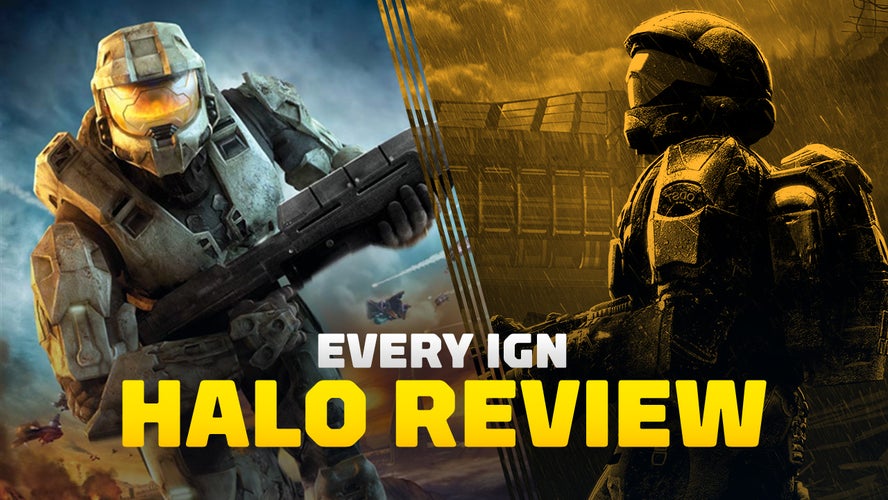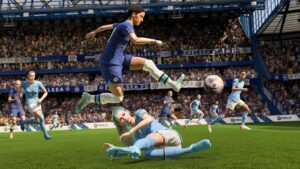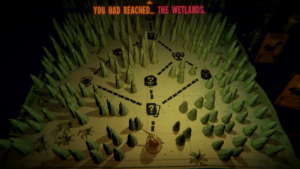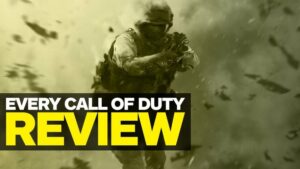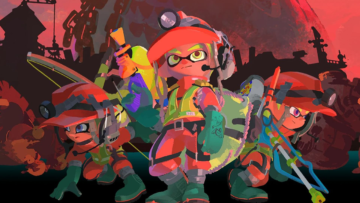First impressions are key, and since six years have passed since Halo 5: Guardians, for a lot of people (like myself) Halo Infinite will be the first Halo multiplayer experience they’ve played at launch – especially since Infinite’s multiplayer is free to play and accessible to everyone with an Xbox or PC. And what a launch it’s been! With its tight 4v4 matches and more chaotic 12v12 Big Team Battle on expertly designed maps, Infinite revives and reinvigorates the glorious sci-fi action that once made Halo king among multiplayer FPS games. Riding high on that thrill, Halo Infinite’s multiplayer has dash-slid into the first-person shooter scene and meleed the competition off the map.
Halo Infinite looks absolutely gorgeous. The environments within each map are so detailed and pretty that I’m now looking forward to the campaign even more. The lighting, settings, and overall look of Infinite bring the futuristic world of Halo to modern-day glory. On PC, it can run at 144Hz easily (and there’s a 120Hz mode on Xbox Series X), and the most severe technical issue I’ve seen has been some server desync and stutters every so often. It wasn’t enough to really mess things up but it was noticeable and made some fights slightly harder than they should have been. I’ve only experienced one crash in my 20 hours of playtime, so my experience has been pretty steady.
Ahead of the beta “test flights” in September, one of my biggest concerns was how Halo Infinite would be able to court new players in addition to pleasing Halo veterans who have a lot of set-in-stone ideas of how Halo should play. But to my surprise, Infinite does a stand-up job of bringing novices up to speed with its Academy mode, in which you can try out different weapon drills or jump into a Training session against bots with customizable match settings. Training mode allows you to try out different power items (such as active camouflage and the grappling hook) that you may not have been able to get hold of much in PvP matches, and it also helps you learn the maps as you explore at your own pace. You can also join matches against bots if you want to test your skills before facing other players – and these are some of the most human-like bots I’ve ever seen.
“
When I did go up against real opponents, the intimate 4v4 Arena playlist’s fast-paced matches gripped me immediately and had me queuing again and again, for hours on end. The only complaint I have about the playlists is not being able to choose which mode you want to play – you can’t just check a box to pick Slayer or Strongholds, you have to queue for all five game modes: One Flag Capture The Flag, Capture The Flag, Strongholds, Oddball, and Slayer. While they aren’t revolutionary, they are undoubtedly fun and infinitely replayable, and have formed the basis of some of the most enjoyable multiplayer arena shooters of all time. As they say: if it ain’t broke, don’t fix it.
Slayer is the traditional team deathmatch, Strongholds has teams fighting to control three capture points on the map, and in Oddball you’re battling over control of a skull. But among the 4v4 modes, my favorite remains plain-old Capture the Flag, which stays fun and competitive no matter how many times I’ve played it. Coordinating with my team and making mad dashes for the enemy’s flag while also chasing down the jerk who stole ours fuels my spirit, and scoring a capture is incredibly rewarding. Playing either defensively around my flag or offensively in trying to steal the enemy’s feels good, and due to the small team sizes no one is unimportant in a match.
The only unconventional mode in that list, One Flag CTF, sounded a little odd to me at first because each round has one team defending a flag and the other team has to capture that flag. But it’s actually a lot of fun – there’s only one map for it, Launch Site, but it has vehicle spawns and easily makes for chaotic and fun gameplay with vehicular Spartan-slaughter as one team attempts to raid the other’s base. All of these game modes are excellent – and much more so when you’re communicating with your teammates.
“
I do have a few gripes, of course. For one, barely being able to hear a seven-foot-tall, heavily armored Spartan run up behind you for a one-hit melee kill is incredibly frustrating. It’s an odd misstep (see what I did there?) given that the weapons and effects all sound great. I don’t want heavy footstep sounds like in CS:GO, where you can tell where people are from pretty much all the way across the map, but the number of times I’ve been run up on – not even crouch stealthed – and killed is kind of ridiculous. Also, cloaked enemies being silent makes sense since the Active Camo powerup requires you to walk or crouch to stay invisible.
A big part of the reason Infinite’s matches work so well is that each of the seven maps for arena matches are incredibly well designed to allow for you and your team to fluidly rotate through them, grabbing key weapons and items as they spawn and sweeping out enemies. My favorite map from that playlist has to be Streets, thanks to its flashy neon signs, dynamic lighting, and freshly rained-upon pavement. It’s a perfect example of readability being key when it comes to map design, favoring bold, angular architecture instead of over-detailed environments that come at the cost of instantly spotting enemies and objective markers.
It’s Strongholds mode that really shows off Infinite’s superior map designs, however, since in this capture-point mode you really need to be able to rotate from point to point with a specific flow to keep an eye on the locations you already control. While the maps in Infinite are smaller than those in most FPS games, the distance between points is just enough that you can easily get from one spot to another. At the same time, you can also get caught out by yourself and eliminated, which encourages you to move as a team. This is where the flow of maps really comes into play.
“
In general, you can run from one side of a map to the other quickly enough that they don’t feel all that large for 4v4 matches, but they’re big enough that you don’t get there too fast or feel like they’re too cramped of a space, either. There are lots of platforms and objects stacked on top of each other that you can use to perfect your rotations, so you aren’t restricted to going down one hallway just to get to a specific area – we actually have a lot of options in these spaces thanks to the ability to vault up to ledges and the absence of fall damage. I’m impressed with how the map designs take all of this into consideration, especially on this smaller scale.
Even with Big Team Battle, the three maps are evenly balanced for 12v12 matches. BTB showcases expansive arenas with enough space for close-range mayhem, long-range sniper plays, rumbling Scorpion tanks, and flying Banshee fighters. I like how, unlike Call of Duty’s breakneck-paced 12v12 matches, BTB allows for you to catch a few moments of breathing time before you engage in a heated fight. The weapon spawns are spaced out enough to give everyone a chance to run for them and the vehicle spawns are mirrored on each team’s side, making for awesome vehicle runs. Power weapons and items are always a risk to play for since they’re placed in the middle of maps, and that makes balancing feel just right.
“
All three BTB maps feature multiple terrain types that give their layouts variety in height and sightlines. In Behemoth, there are a lot of platforms that let you get higher positioning at the risk of getting sniped from across the way, since the higher levels are more exposed. However, if you’re lower on the ground you may not spot the enemies above your head. The flow in BTB maps feels great – it never takes too long to get into a fight but there’s also enough space that I’ve had no trouble with spawn camping at all. After yet another year of Call of Duty’s notoriously bad spawn system, that’s been a breath of fresh air.
You can play all of that casually, but Infinite also includes a Ranked playlist, available off the drop, which is a great competitive mode for those who want to surround themselves with equally skilled players. You knock out 10 placement matches before you’re given your initial rank, then you can grind out some matches in that Ranked playlist to move up. The tiers are reasonable (going from Bronze to Onyx with six levels within each tier) but the one thing I’d want more clarification on is how you’re graded on performance to move up or down tiers. Right now that’s a bit mysterious.
In terms of gunplay, the weapons feel decently balanced, with some distinctive quirks to them. The Time to Kill (TTK) is certainly longer than in most other games and took me a bit of time to adjust to, maybe a few matches at most, before I was no longer surprised that a target was still standing after I’d unloaded most of an assault rifle’s magazine into them. It probably takes a couple of shots more than I’d like to down an enemy, and that does make it a little harder to win 1v2s here than in faster games like Apex Legends or Call of Duty. But Halo is very much a game about team play, so if you’re smart you won’t be trying to take on multiple adversaries too often since that usually means you’re overextending by yourself.
I have to say, it’s very weird that the MK50 Sidekick pistol is stronger than the MA40 Assault Rifle. While I understand that Halo games have had this balance as the meta going all the way back to the original and the AR is the strongest it’s been in any game in the series, it just seems weird to have a pistol outgun a big, chunky AR. Meanwhile, a few of the weapons you pick up out of dispensers on the walls feel a bit weak in their damage per second (DPS), especially with guns like the VK Commando which sounds and looks like a beefy gun that should knock a target flat but actually takes quite a few extra shots to kill an enemy, even with headshots.
“
That said, the weapon variety is pretty generous, allowing you to pick your choice of pistols, burst rifles, and shotguns. The Mangler, a precision-based revolver, is one of my favorite pistols to use since it rewards you for careful shots and can be used at close or long range (once you learn to compensate for the projectile drop). The CQS48 Bulldog is my favorite shotgun (much better than the fancier-sounding Heatwave) because of its tight spread that can take down a target quickly with accurate body shots. Also, the fan-favorite Needler feels especially rewarding when you’re able to stick a full stack of heat-seeking needles into an enemy and watch them explode after a short delay. Overall, the weapons feel satisfying to use and nothing is wildly overpowered – not including Power Weapons, of course. However, there are a few weapons that I find myself avoiding, like the Plasma Pistol and the Pulse Carbine – I just don’t like the rate of fire of either of them and they don’t output the amount of DPS needed in a close-range fight.
The Power Weapons, such as the M41 SPNKR rocket launcher and the Gravity Hammer, are limited to a few shots to keep things from getting out of control when you snag one. However, the Energy Sword definitely seems to have three to four charges too many – that could be toned down a bit, since right now the only thing keeping it in check is the fact that you have to close in to melee range to score a kill with it.
While the weapons feel as great and handle as we’ve come to expect from Halo, one thing that feels disappointingly inconsistent is the melee. Standard Spartan melees are a two-hit kill, which feels fine, but the range and damage rarely seems to work the way I expect. It doesn’t help that Infinite uses soft collision, meaning you can pass through another player, instead of hard collision, where you bounce off of each other. While soft collision keeps people from griefing each other by blocking doorways, a side effect is that the way people can phase through each other means melee strikes don’t feel right. Sometimes you’re able to get a “backsmack” instant kill while facing your opponent and other times you completely miss by phasing through their body and they get the opportunity to kill you. Also, I’ve seen what appear to be direct melee hits to the face do no damage, even when the enemy is a sneeze’s worth of health away from dying.
“
Something you can always count on, though, is the classic Halo grenade plays. Calculating the timing on a grenade throw and counting the bounces before it goes off and kills an enemy is one of the most rewarding experiences in Infinite’s multiplayer. Being able to throw a ‘nade behind enemy cover and then push them backwards into the explosion is so satisfying, and sticking someone with a plasma grenade is always a hilarious way to earn a kill. In this game, grenades are an art form.
Infinite also makes smart use of its gadgetry. The Grappleshot is my favorite, and I use it to reposition myself around enemies in active fights. It’s also great for a quick disengage from close-range fights to heal up before grappling back in to finish the fight. I also really enjoy the fact that you can grapple enemies and catch them off guard, and even throw in an elbow punch to the back of their heads when you get right up to them. I’ve even come to love the Thruster – it took a while to grow on me, but now I’ve found ways to get creative and dash past enemies, then turn and backslap them during heated fights where they were trying to keep their distance.
“
The Drop Wall still isn’t my favorite equipment item, but that’s purely based off of my aggressive playstyle – hunkering down behind a deployable shield just makes me feel like grenade bait. Active Camo is much more my style, since its invisibility allows me to get multiple stealth kills in a row literally before they know what hit them. I also love the Repulsor, which reflects projectiles back at enemies while also pushing them back from you. Using it to throw enemies off the map was probably not what it was intended for, but it’s a ton of fun to mess around with equipment and weapon combos like that. Having that creative freedom is important, and Infinite does a great job of allowing you to have fun while slaying.
And all of that comes at just the right time. In fact, Microsoft couldn’t have chosen a better moment for Master Chief’s comeback, with Call of Duty: Vanguard’s multiplayer feeling like more of the same and Battlefield 2042’s main modes leaving much to be desired. Infinite’s long-absent style of team-based multiplayer is the shot in the arm the shooter community needed right now.
Source: https://www.ign.com/articles/halo-infinite-multiplayer-review
- 000
- 11
- 7
- Action
- active
- All
- Allowing
- among
- AR
- architecture
- AREA
- ARM
- around
- Art
- Battle
- Battlefield
- beta
- Biggest
- Bit
- body
- bots
- Box
- breathing
- Bundle
- business
- call
- Call of Duty
- Campaign
- camping
- Catch
- caught
- challenge
- charges
- community
- competition
- Competitive
- Costs
- Couple
- Court
- Crash
- Creative
- Credits
- ctf
- damage
- Dash
- delay
- Design
- Developer
- DID
- distance
- Drop
- energy
- engage
- equipment
- esports
- Expand
- experience
- Experiences
- eye
- Face
- facing
- fair
- FAST
- Feature
- fights
- fine
- Fire
- First
- Fix
- flow
- form
- Forward
- FPS
- Free
- Free to Play
- Freedom
- fresh
- full
- fun
- game
- gameplay
- Games
- General
- generous
- good
- great
- Grow
- guns
- head
- Health
- here
- High
- hilarious
- hold
- How
- HTTPS
- i
- image
- important
- Including
- industries
- IT
- Job
- join
- jump
- keeping
- Key
- Kills
- King
- large
- launch
- LEARN
- Limited
- List
- Long
- love
- Making
- map
- Maps
- Match
- May
- Meta
- Microsoft
- money
- move
- multiplayer
- Neat
- Neon
- open
- Opportunity
- Options
- organizations
- Other
- PC
- People
- performance
- Plasma
- Platforms
- play
- player
- players
- Playing
- power
- Premium
- pricing
- projectiles
- punch
- raid
- range
- requires
- review
- Rewards
- Risk
- Run
- s
- Scale
- sense
- Series
- server
- set
- Short
- shotgun
- Signs
- SIX
- skills
- Skin
- small
- smaller
- smart
- So
- Space
- speed
- Spending
- Spot
- spread
- stay
- stole
- store
- Strikes
- support
- surprise
- system
- Target
- Technical
- test
- The
- time
- Ton
- top
- traditional
- Training
- Update
- Vault
- vehicle
- Veterans
- Watch
- weekly
- What
- WHO
- win
- within
- words
- Work
- world
- worth
- X
- xbox
- Xbox Series X
- year
- years
